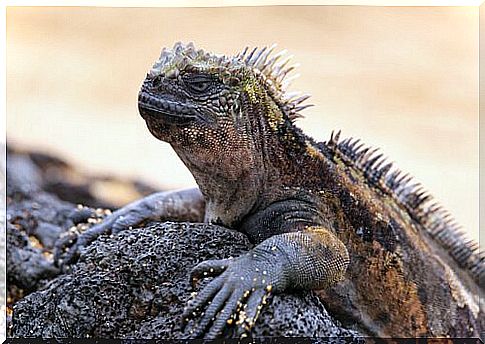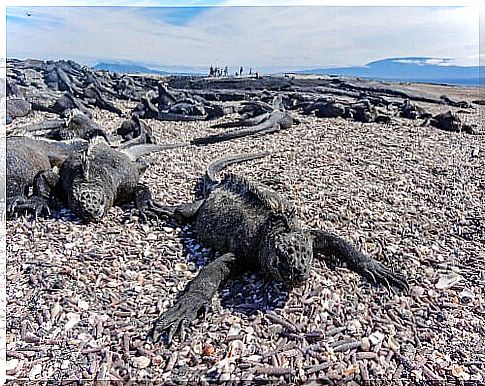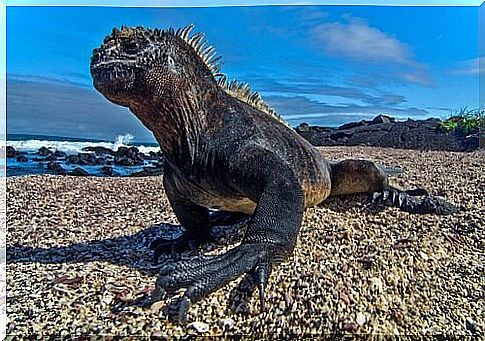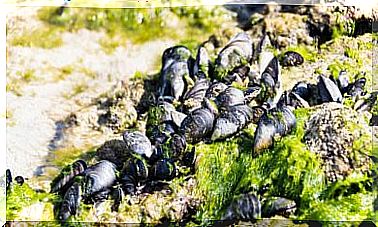Meet The Galápagos Marine Iguana

When we think of the Galapagos Archipelago, we imagine two animals: the giant tortoise and the marine iguana. In this article we will talk about the latter, an endemic and extraordinary species that is worth knowing.
Marine Iguana Habitat
Its scientific name is Amblyrhynchus cristatus; this is a scaly reptile that belongs to the Iguanidae family . It is an endemic species of the Galapagos Islands, which inhabits the rocky coasts of this Ecuadorian archipelago, although it is also possible to find it on local beaches and mangroves.
Characteristics and behavior of the marine iguana
Male marine iguanas measure approximately five feet and can weigh up to 15 kilos. Females are half the size and much lighter.
As they are cold-blooded animals, they need to spend many hours a day in the sun, on the rocks of the coast. In this way they increase the body temperature. Because they are black in color, they absorb heat more quickly when they come out of cold water or after being “covered” by waves on the coast.
When swimming, the marine iguana decreases its heart rate for the sole purpose of not losing accumulated heat. They can even stop your heartbeat for several minutes without risk of dying.

Due to their size and the fact that they have spines from head to tail, adult males do not have natural predators on the islands. However, females, eggs and chicks cannot be so lucky: they can be prey for snakes or the Galapagos falcon.
With regard to reproduction, females emit very strong odors to “call” males, who mate with more than one pair in the same season. They are responsible for finding various materials to build a nest that is as secure as possible.
Furthermore, they ensure that the eggs are kept at the correct temperature to survive. It is worth noting that the sea iguana’s egg does not hatch like a bird’s and, as long as the chicks hatch, they must take care of themselves.
food
A very curious fact about the marine iguana is that it feeds almost entirely on seaweed. Adult males are the only ones able to swim for food because they are bigger. Both females and chicks must wait for the tide to go out to get their food, that is, the algae that get stuck on rocky surfaces.
The weight of the marine iguana can vary up to 25%, depending on the time of year and the foods available. In spring and summer there is more algae and therefore they store fat for the winter and fall, when the population of marine vegetation is reduced.

Also, it’s worth noting that the marine iguana must release the excess salt it ingests through the algae. How do they do it? They expel salt in the form of crystals through the nasal gland… as if they were sneezing!
Due to human life in the Galápagos Islands, the marine iguana is a vulnerable species that can be attacked by dogs and cats or become trapped between fishing nets. Among other risks for the reptile are water and beach pollution, because they can eat plastic waste thinking it is algae. In addition, we must talk about hunting for sport and bad tourist practices.
The marine iguana is an amazing species that has been able to adapt to a hostile environment and far from any other ecosystem, which is why it’s worth taking care of and protecting them.









